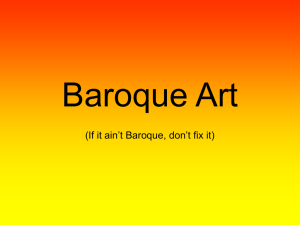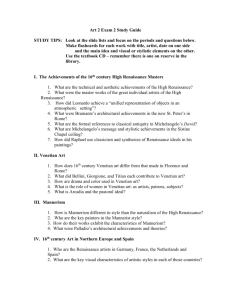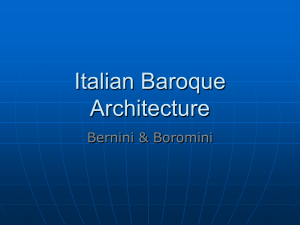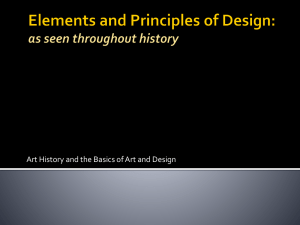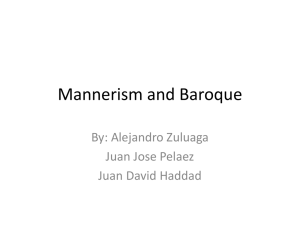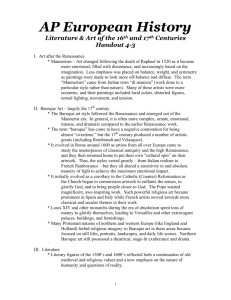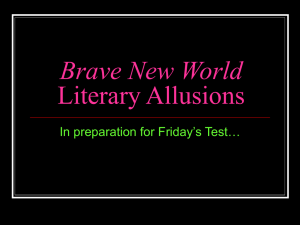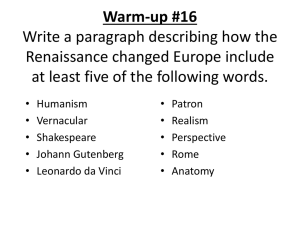Mannerism
advertisement
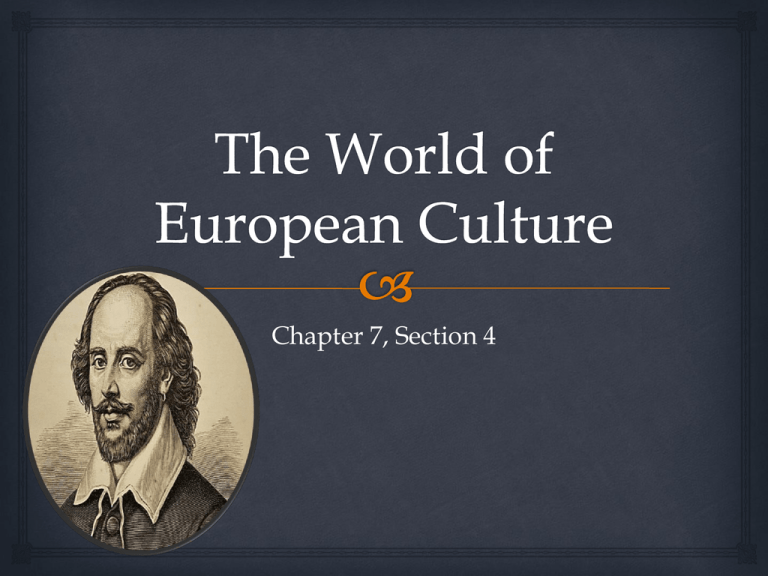
Chapter 7, Section 4 Mannerism Mannerism emerged in Italy sometime in the 1520s and 1530s as the Renaissance came to an end. • It reflected this new environment in art by deliberately breaking down the High Renaissance principles of balance, harmony, and moderation. • Rules of proportion were deliberately ignored as elongated figures were used to show suffering and heightened emotion. • Mannerism reached its high point in the work of El Greco (“the Greek”) who used elongated and contorted figures to reflect the religious upheavals of the Reformation. The Baroque Period The baroque movement eventually replaced mannerism. Baroque artists tried to bring together the classical ideals of Renaissance art with the spiritual feelings of the sixteenth-century religious revival. This artistic style was noted for its use of dramatic effects to arouse the motions, and in large part, reflected the search for the power that was such a part of the seventeenth century. Baroque churches and palaces were magnificently and richly detailed – Kings and princes wanted other kings and princes and their subjects to be in awe of their power. Baroque Art Gian Lorenzo Bernini was perhaps the greatest figure of this period. He was known for completing Saint Peter’s Basilica in Rome and the Throne of Saint Peter, a highly decorated cover for the pope’s medieval wooden throne. The Throne of Saint Peter Completed in 1666, Bernini’s “Throne of Saint Peter” took eleven years to finish. How do you think Bernini wanted his work to impact the viewer? The Golden Age of Literature In both England and Spain, writing for the theater reached new heights between 1580 and 1640. In the late sixteenth century leading into the seventeenth, a cultural flowering known as the Elizabethan Era took place. Of all the forms of Elizabethan literature, none expressed the energy better than drama, and of all the dramatists, none is more famous than William Shakespeare. William Shakespeare Shakespeare was a playwright, actor and shareholder in the chief theater company of the time, Lord Chamberlain’s Men. He wrote around 40 plays and coined more than 1,700 words in the English language. A “complete man of the theater,” Shakespeare has long been viewed as a universal genius and master of the English language. Shakespeare’s Works Romeo and Juliet A Midsummer Night’s Dream Hamlet Macbeth Othello Richard III Shakespeare’s words… Bedroom Champion Lonely Cater Love Sick Accused Sneaky Addiction Gloomy Green-eyed Secret Elbow Jealous swagger Spanish Literature Lope de Vega – wrote over 1,700 plays – 500 of which still survive. They were characterized as witty, charming, action-packed and realistic. Miguel de Cervantes – wrote Don Quixote, one of the crowning achievements of the golden age of Spanish literature. In Quixote, we meet Don Quixote from La Mancha who is so involved in his ideals that he does not see the hard realities around him. For example, he wages battle against a windmill that he sees to be a four-legged beast. Don Quixote and Sancho Panza Political Thought Thomas Hobbes – wrote Leviathan which was published in 1651. Claimed that before society was organized, human life was “solitary, poor, nasty, brutish, and short.” Believed humans were guided not by reason and moral ideals but by a ruthless struggle for self preservation. Thought that only a powerful government could create a peaceful and orderly society. Political Thought John Locke – wrote Two Treatises of Government. Locke argued against the absolute rule of one person. Believed that before society was organized, humans lived in a state of equality and freedom. Said that humans had certain natural rights – life, liberty and property. Believed government would protect the rights of the people and they would act reasonably toward the government. BUT, if the government broke the contract, the people might form a new government.


